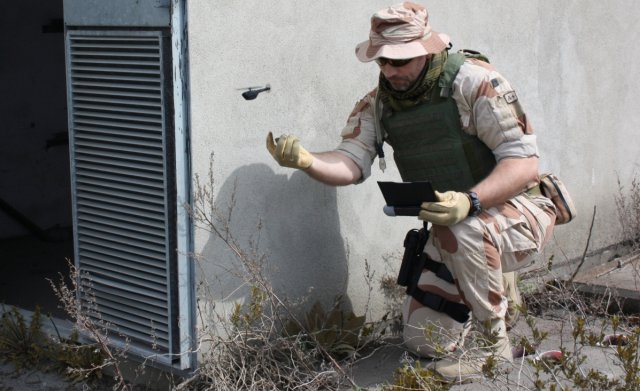
Black Hornet – Photo: Prox Dynamics
The Australian Army has put out its feelers to buy up to 200 tiny drones over the next two years so its combat teams can spy on the enemy, scan dangerous situations and navigate rough terrain.
The Army is taking its request out to the open market and will draw up a shortlist of tenderers to supply “nano unmanned aerial systems” from 2017, although Commonwealth funding for the project has not yet been approved.
The Helicopter, Tactical Unmanned Aerial Systems and Guided Weapons Division will use the pocket-sized drones to help section and platoon tactical commanders spy on the enemy’s position and condition and scan remote areas by day and night, while keeping troops safe from enemy fire. The nano drones will provide near real-time motion imagery and stills and relay them back to commanders.
The tender document, which closed yesterday (Thursday) says the drones will need to be able to detect targets as small as a person walking along and also be able to peer into the windows of vehicles and multi-storey buildings and clear a route in real time while also providing stills.
“Effectively, the NUAS, will provide an over the hill, down the road and around the corner’ reconnaissance facility…the NUAS could be considered ‘a flying pair of binoculars’, says the tender document.
The Army has already trialled 25 PD-100 Black Hornet drones in manoeuvres and now wants to roll this capability out to more of its units, including land and special forces, although the new drones do not need to be the same make or model.
Tenderers will have the chance to show off their nano unmanned aerial systems at the Queanbeyan Model Aircraft Club at the end of August.
Black Hornet Nano was developed by Norwegian firm Prox Dynamics AS and is already used by the Norwegian and British Armies and the United States Marine Corps. They can fly noiselessly for 25 minutes and weigh 18.25 grams (including batteries) and measure 10cm by 2.5 cm. Their range is up to 2.4 km. Each pack contains two drones – while one is flying, the other is charging.
But this kind of high-tech spying solution does not come cheap. The Black Hornet PD-100, upagraded to fly night-ops, cost about $288,000 each.
The British Army has flown the Hornets into enemy territory in Afghanistan to look round walls and corners and on top of buildings and reveal enemy positions and other hidden dangers. A captured drone will not reveal what it has recorded as the information is stored on a small box on the soldier’s utility belt.
Source: Government News
